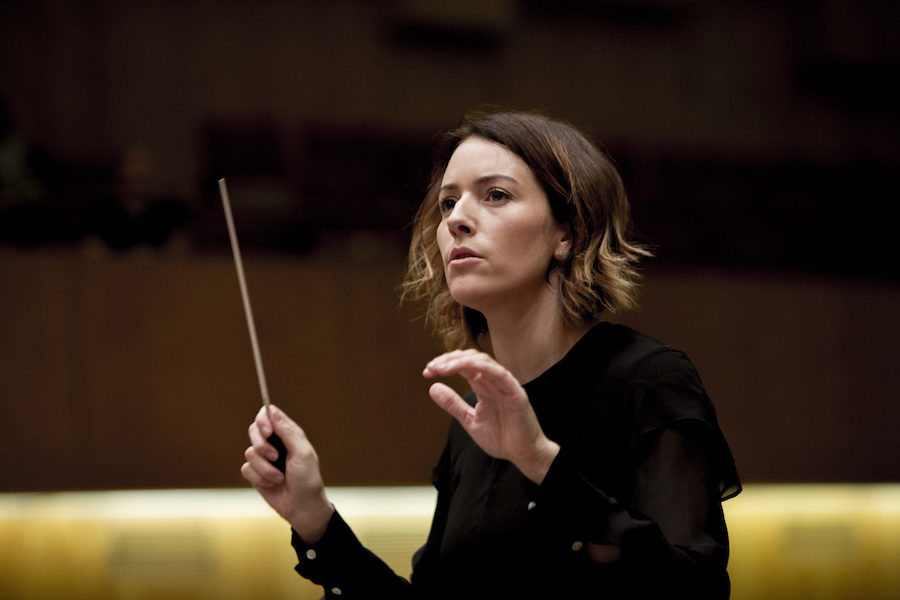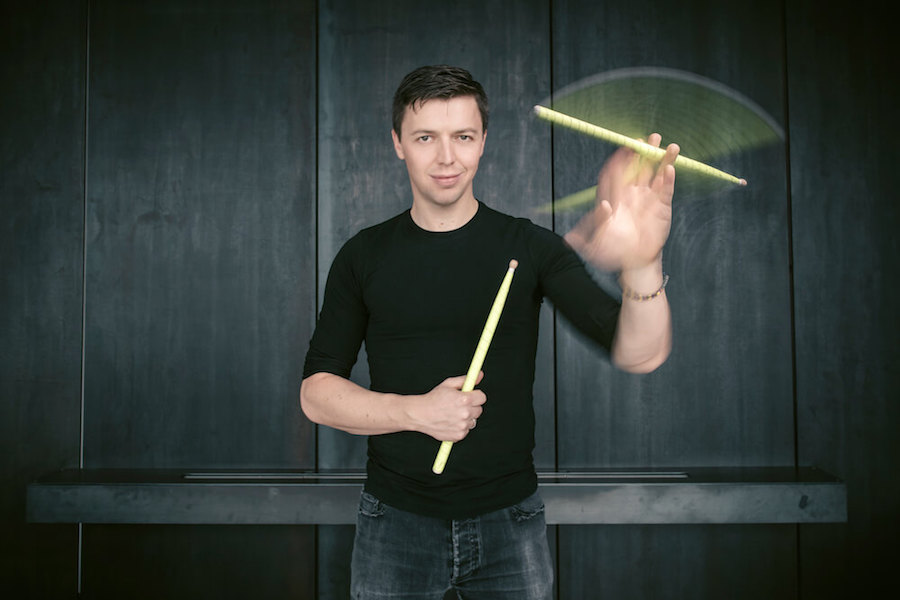It was fitting that Mexican-born Alondra de la Parra, Music Director of the Queensland Symphony Orchestra (QSO), chose to conduct music inspired by the Americas and the New World in this Maestro concert. The choice of pieces was apt and varied, offering a delightful program to both entertain and inspire.
Aaron Copland’s beautifully realised Appalachian Spring, considered by many to be a definitive work of 20th-century American music, centres around a young couple anticipating a pioneer life in the Pennsylvania hills with ‘Spring’ here representing a new beginning, rather than the season.
 Alondra de la Parra. Photo © Felix Broede
Alondra de la Parra. Photo © Felix Broede
The opening section depicting dawn breaking was quiet and languid, with shimmering strings giving way to the sun rising from a haunting solo clarinet. This stylised gentle music consisting of long chords was expressively conducted, de la Parra injecting a sense of the sweeping American landscape into the work. The gradual addition of strings, woodwind, horns and percussion, followed by trumpets and trombones, expressed optimism in the upbeat jazz sounds of the Allegro.
This work swings back and forth between a hopeful energy and wistful apprehension, relished by the orchestra with intelligent and well-judged playing, offering impressive solo opportunities for the woodwind and French horns. The instantly recognisable ‘Shaker’ song began softly with the clarinet’s rising notes but was subsequently taken up by all sections of the orchestra, leading to the climax of the work and a hushed ending from clarinet, glockenspiel and harp.
Israeli composer Avner Dorman’s Frozen in Time, written for percussionist Martin Grubinger, was an Australian premiere and an extraordinary piece of writing. Its expansive global vision imagines the three original continents of Indoafrica, Eurasia and The Americas at a certain point of time, allowing rhythmic musical themes from many cultures to coalesce. Whilst the orchestra was strongly supportive throughout, creating terrific sonic pictures, the work is centred almost entirely around the percussion. And in Martin Grubinger we witnessed an exemplary performance of extraordinary technical skills, high energy, great passion and sheer joy in both the music and his use of multi-percussive instruments.
The opening movement showed off the rhythms of Indoafrica with Grubinger playing with four sticks on a range of keyboards including Marimba and Cencerros (cowbells) for Indian music, as well as a traditional drum-kit and bass drum for African music. A cadenza of incredible drumming at a ferocious pace gave way to the ultra-soft marimba playing of the Eurasia movement, supported with gentle strings. This introduced some fun percussive elements including cow bells, with a grinning Grubinger in charge. A reflective and almost hypnotic meditative section followed, visually and musically fascinating. The third movement of The Americas brought together all the elements of Broadway, jazz, salsa, tango, Cuban and swing music and introduced some saxophones into the mix. Grubinger divided his time moving seamlessly between keyboards and drum kit, delivering an overall thrilling performance.
 Martin Grubinger. Photo © Simon Pauly
Martin Grubinger. Photo © Simon Pauly
As his party piece, Grubinger produced an encore that showed off his remarkable talent on a specially prepared snare drum. Using his considerable technique, with clever underarm and back tricks, he demonstrated a remarkable ability to play at speed in a number of convoluted positions while producing a glorious sonic palette, much to the delight of the audience.
Dvořák’s Symphony No 9, commonly known as ‘From the New World’, was inspired by African-American and Native-American music, while also drawing on the composer’s own Bohemian folk background. One of the most popular works in the classical repertoire, the work offers musical themes that both touch the heart-strings and lift the spirits.
The Adagio movement started tentatively with softly played woodwind, gradually merging into the major theme involving tremolo strings and strident horns with additional lighthearted elements from the bassoon, clarinet and oboe. The range of instrumental colours were splendidly delivered. Dvořák’s languid Bohemian folk tune gave way to a cleverly introduced African-American spiritual theme, the transition well managed by flute and violins.
The celebrated Largo movement, with its Cor Anglais solo, was beautifully played but conducted just a touch too fast as the wistfulness comes from the drawn-out legato. Despite this, the movement was heart-felt while the work of clarinet, bassoon and brass impressive. Additionally, the high strings produced some wonderful pianissimo, with double-basses rumbling darkly underneath.
The Scherzo with its blend of bohemian and native American music was energetic and bright, with a sprightly theme from the empowered woodwind. The final Allegro con Fuoco with its forceful and majestic opening allowed all sections of the orchestra to shine, with solid brass and timpani, a delicious solo clarinet and the final impressive horns.
Conductor Alondra de la Parra was less successful in this work, her somewhat stiff and unemotional conducting style seemingly at odds with the delicacy and folk-like nostalgia of the music, though the overall result was a fine achievement by the orchestra.
Particular mention should be made of the sterling work of the woodwind throughout the concert. The clarinet plays a major role in both the Copland and Dvořák and was brilliantly played by principal Irit Silver, alongside impressive solos by her colleagues on flute, piccolo, oboe, bassoon and French horn. Together with the astonishing percussion performance by Martin Grubinger, this was a terrific night of music making in the concert hall for the QSO.











Comments
Log in to join the conversation.